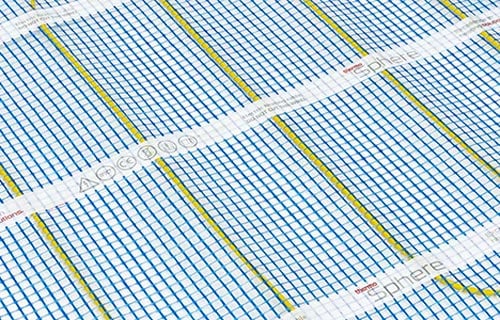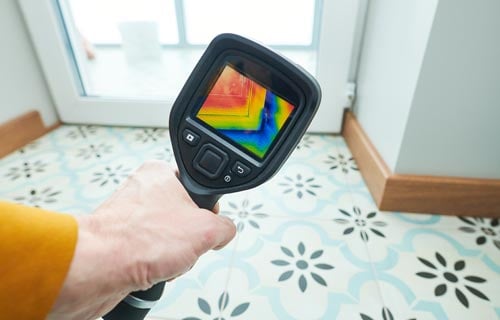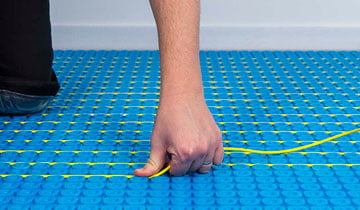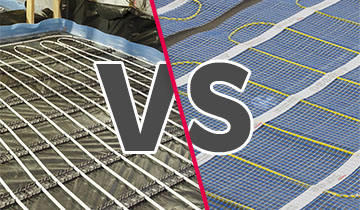8 min read
7 tips before buying electric underfloor heating
If you are in the market for an electric underfloor heating system for your next home renovation, then you have landed in the perfect place. We’ve...

With the heating season just around the corner, and one of the busiest times of the year for any heating manufacturer, we thought it would be a good time to recap the pros and cons of underfloor heating.
For this heating blog, we’re focussing on electric underfloor heating because that’s our area of expertise. If wet underfloor heating is more your thing, we recommend visiting our friends over at WMS who are a leading supplier and installer of heating systems for new build developments in the UK.
If you’re reading this, then it’s because electric underfloor heating has captured your curiosity and you want to find out more. So, without further ado, let’s run through the pros and cons of electric underfloor heating.

There are many pros to electric underfloor heating, many of which are the same as a wet underfloor heating system. In no particular order, here they are.
Greater efficiency
Electric underfloor heating operates at a lower temperature compared to other systems such as traditional central heating, it’s also 100% efficient at point of use. This means for every joule of energy you pay for; it will be used at the exact point where the heat is needed. Whereas with wet heating systems, efficiency is lost because the warm water needs to be transported via a network of pipes which results in some heat being lost. As an example, many heat loss calculations allow for an average 5% of heat lost from uninsulated pipework.
Design freedom
Imagine not needing to take radiators off walls just to decorate properly? Or using one of those annoying little rollers to paint behind a radiator. Because electric underfloor heating can be used for both a primary and secondary source of heating, you won’t need radiators on the walls if the system has been specified to the results of a heat loss calculation.
Zone control
Electric underfloor heating is controlled simply and allows you to create heating zones in your home easily. By creating heating zones you’ll conserve energy because you are only heating up the rooms you need rather than running around turning off radiator valves in rooms you barely use. With underfloor heating, it’s worth using setback temperatures in rooms that are infrequently used rather than turning the heating off altogether as it will save you energy and cost in the long-run.
Lower emissions
Unless you are using 100% of your electricity from renewable sources such as wind or solar, the production of electricity you use to power the heating system will produce some carbon emissions. However, it is significantly less than emissions produced by gas boilers used for central heating and hot water systems. This makes electricity a much greener fuel to use to heat your home.
Lower upfront costs
If you are keen on underfloor heating but weighing up the cost of electric vs wet, Checkatrade offer some insight. According to Checkatrade the average quote to install 10m2 of electric underfloor heating is £800 and for wet underfloor heating it’s £1,200. The cost of installing differs again depending on if it is a renovation or new build project. Renovation projects tend to cost more because there is usually more preparation work involved before installing the system.
Fast to warm up
Electric underfloor heating is much quicker to warm up compared to wet systems. If it has been properly installed and the output is correct for the space, you’ll be able to feel the comfortable heat within 30 minutes from the system being switched on. Because it is fast to warm up it is ideal for bathrooms where you’d need bursts of heat in a short period of time.
Benefits to health
That’s right! Underfloor heating can also benefit health. Apart from helping to reduce slip risk in bathrooms, it’s also helpful for homeowners who may have respiratory conditions. Why? The way that traditional radiators heat a room is through convection, this is when hot air rises and then falls when it gets cooler. This carries dust particles around the room which makes it easier for you to breathe them in and is problematic for people with any respiratory conditions. With underfloor heating there is much less movement of air due to the room being heated via radiation which means there’s less chance of inhaling dust particles.
If you want to learn more about the benefits to your health that underfloor heating can offer, read ‘Can underfloor heating boost your health?’.

Just like other heating systems, electric underfloor heating does have some cons which may make it not suitable for your project. These are worth considering before parting with your cash.
Running costs
Electric underfloor heating is commonly used differently to other types of heating systems. It’s on for between two and four hours each day and usually found in smaller areas such as bathrooms. We found, on average, to run a 3m2 electric underfloor heating for four hours per day will cost in the region of £0.70 to £1.00 depending on the output of the system.
When it comes to the cost per kilowatt hour of electricity, it’s currently more expensive than gas. This means that electric underfloor heating systems will be more expensive to run compared to water underfloor heating system in the same size room where the water is heated by a gas boiler. This is one of the reasons why electric underfloor heating is used in smaller areas compared to its wet counterpart.
If you would like to know a rough estimate of the cost of running an electric underfloor heating system, crunch some numbers using our Running Cost Calculator.
Loses heat faster
Although electric underfloor heating provides faster heat up times and short bursts of heat by ‘boosting’ the system, it also loses heat faster than wet underfloor heating and traditional central heating systems once turned off because there is less thermal mass (depth of floor above the electric underfloor heating).
However, inscreed electric underfloor heating systems offer more thermal mass due to the thick layer of screed the heating cable sits within. This means it acts much more like a storage heater, can be used with cheaper tariffs such as Economy 7 (cheaper rates for off-peak) and can even help achieve an EPC A rating.
Restricts what type of furniture you can have
If you are passionate about having a plethora of flat-bottomed furniture throughout each room, then underfloor heating might not be wise. Flat-bottomed furniture or any rug with a tog rating of 2.5 and above should not be placed over a heated floor especially where the heating cable is installed. If you do, airflow will be restricted and cause ‘thermal blocking’. When airflow is restricted, it will overheat because the heat is blocked from radiating out and therefore, cause damage to the floor finish especially wood, carpet or vinyl floor finishes.
If you have a question about anything covered in this heating blog or a more general question about ThermoSphere’s range of electric heating please contact one of the ThermoSphere team who will be happy to help.

8 min read
If you are in the market for an electric underfloor heating system for your next home renovation, then you have landed in the perfect place. We’ve...

5 min read
With the colder months fast approaching, many homeowners will start to think about turning on their heating and some may even be getting new heating...

11 min read
In this heating blog article, we will be walking you through both water underfloor heating and electric underfloor heating to help you decide what...